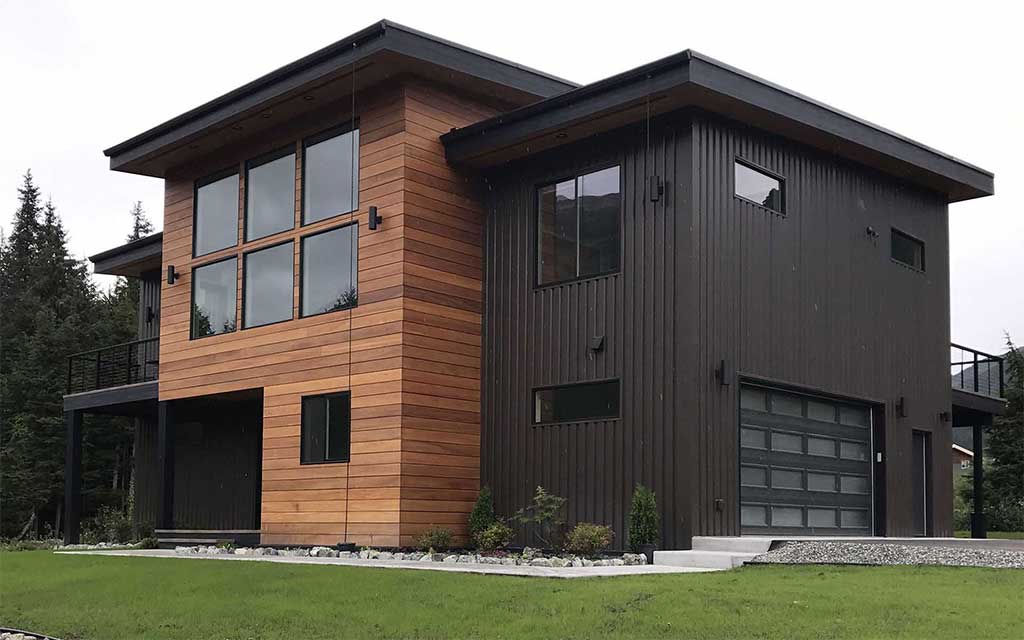Your home’s exterior is the first thing people see, and it can have a significant impact on your property’s overall value. One effective way to give your home a facelift is by installing exterior panelling. Not only does exterior panelling increase your home’s curb appeal, but it also provides additional insulation and protection from the elements. In this article, we will discuss various exterior panelling options and provide tips for their installation.
Exterior panelling is available in a variety of materials, each with its unique advantages and disadvantages. The most popular types of exterior panelling are wood, vinyl, and fiber cement.
Wooden Exterior Panelling
Wood is a classic and versatile exterior panelling option. It is available in a variety of species, including cedar, redwood, and pine. Wooden exterior panelling provides natural warmth and texture to your home’s exterior, and it can be painted or stained to match your preferences.
However, wooden exterior panelling does require regular maintenance, such as painting or staining, to prevent damage from insects, rot, or moisture. If you opt for wooden exterior panelling, you should consider using a high-quality stain or paint and ensure that the wood is properly treated to protect it from the elements.
Vinyl Exterior Panelling
Vinyl exterior panelling is a low-maintenance and cost-effective option. It is available in a variety of colours and textures, including those that mimic the appearance of natural wood. Vinyl exterior panelling is durable, resistant to fading, and requires minimal maintenance. It is also resistant to insect damage and rotting.
However, vinyl exterior panelling is not as visually appealing as wooden or fiber cement options. It can look cheap, and it may not be as durable as other materials. Vinyl exterior panelling is also not very eco-friendly, as it is not biodegradable and can be difficult to recycle.
Fiber Cement Exterior Panelling
Fiber cement exterior panelling is a popular option due to its durability and versatility. It is available in a variety of textures and finishes, including those that mimic natural wood, stone, and brick. Fiber cement exterior panelling is resistant to fire, insects, and rotting, and it requires minimal maintenance.

Fiber cement exterior panelling can also be painted in any colour, making it an ideal option for homeowners who want to customize their home’s exterior. However, fiber cement exterior panelling can be more expensive than other options, and it can be challenging to install. Professional installation is recommended to ensure that the panels are properly secured and sealed.
Installation Tips
Installing exterior panelling is a complex process that requires careful planning and attention to detail. Here are some tips to ensure that your exterior panelling installation is successful:
Choose the right material for your needs and budget. Consider factors such as durability, maintenance requirements, and aesthetics.
Prepare your home’s exterior for installation. This may include cleaning the surface, removing old siding, and repairing any damage.
Ensure that the exterior panelling is properly installed and sealed. This can help prevent moisture damage, insect infestations, and other problems.
Consider hiring a professional contractor to install your exterior panelling. Professional installation can ensure that your panelling is properly installed and sealed, and it can save you time and money in the long run.
Regularly inspect and maintain your exterior panelling. This can help prevent damage and prolong the life of your panelling.
Conclusion
Revamping your home’s exterior with new panelling is an excellent way to give your home a fresh and updated look. With various materials to choose from, each with their unique advantages and disadvantages, you can find the perfect exterior panelling for your home.






